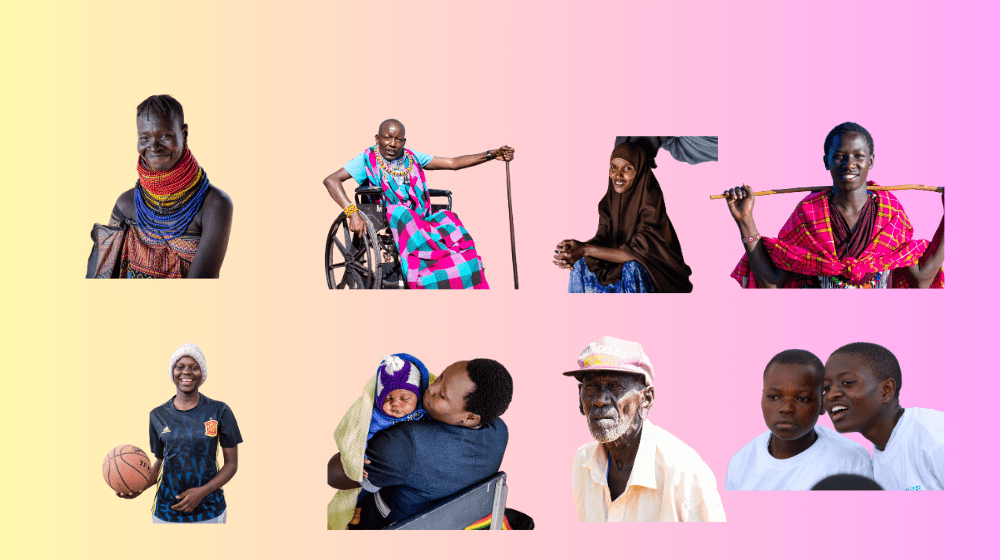On 6th June 2024, the Government of Kenya with support from UNFPA and partners launched the Sessional Paper No. 1 of 2023 on the Kenya National Population Policy for Sustainable Development. The policy aims to address the country’s population challenges and leverage opportunities to achieve the goals outlined in Kenya’s Vision 2030, Africa’s Agenda 2063, the ICPD Agenda, the 2030 Agenda for Sustainable Development, and other national development aspirations. Implemented successfully, , the policy will contribute to the realization of the unfinished business identified in Kenya’s national ICPD25 commitments and the attainment of UNFPA’s three transformative results of Zero unmet need for family planning; Zero preventable maternal deaths; and Zero gender-based violence and all harmful practices against women and girls.
Among the policy's objectives are attaining a population age structure that will accelerate economic development, and promoting initiatives that enable individuals and couples to make informed choices on family size. It seeks to implement interventions that improve health and increase lifespan across all age groups. Additionally, the policy aims to address challenges and maximize opportunities arising from people's movement and urban growth to achieve national development goals.
Six key highlights of the policy:
1. Empowering Adolescents and Youth
Kenya's population currently stands at about 50 million people and is projected to grow to 57.8 million by 2030, according to the Kenya National Bureau of Statistics (KNBS). The youth constitute 29 percent of the population, with their numbers growing much faster from 3.2 million in 1989 to 13 million in 2019 and expected to hit 19 million by 2035. Recognizing the significant role that adolescents and youth play in Kenya's demographic dynamics, the policy proposes interventions aimed at addressing the challenges faced by this age group, including high levels of teenage pregnancies, child marriage, and limited access to education and employment opportunities.
Recognizing the importance of empowering adolescents and youth to make informed choices about their sexual and reproductive health, the policy proposes a greater focus on supporting adolescent health through reconfiguring health systems to cater to the specific needs of adolescents and young people. It also proposes the promotion of initiatives that empower adolescents and youth with education, internship opportunities, and skills training. By addressing the health and employment needs of the youth, the policy aims to harness the demographic dividend and promote sustainable development. The policy also plans to ensure that age-disaggregated data is included in routine reporting and surveys.
2. Promoting Gender Equality
The policy strongly emphasizes gender equality and acknowledges the impact of social-cultural factors, such as gender-based violence and Female Genital Mutilation (FGM), on population dynamics. It promotes community awareness to address harmful practices, social norms, religious beliefs, and gender inequalities that affect individual health outcomes. To accelerate progress in the elimination of gender-based violence, female genital mutilation, and other harmful practices against women and girls, the policy proposes a fast-tracking of the implementation of relevant policies in place and enhanced investment in preventive action.
3. Reducing Maternal Mortality
Maternal mortality remains a significant challenge in Kenya. The maternal mortality ratio currently stands at 355 deaths per 100,000 live births. Given the current annual births, this means that there are nearly 5000 women and girls dying annually due to pregnancy and childbirth-related complications. A significant proportion of women also experience long-term health complications, including injuries, infections, disabilities, and illnesses such as obstetric fistula. The policy raises concern on the maternal mortality ratio among females aged 15-19 years which is 464 per 100,000 live births. The risk of maternal mortality is highest among adolescent girls due to the high complications in pregnancy and childbirth with pregnancy complications contributing to 16 percent of the deaths among female adolescents.
The policy proposes several measures to address maternal mortality, including promoting community awareness to combat socio-cultural harmful practices that contribute to maternal morbidity and mortality. It advocates for investment in targeted interventions designed to meet the reproductive needs of adolescents and young girls. Additionally, the policy aims to improve health services by providing cost-effective and high-impact interventions that address the continuum of care needs of women. It also emphasizes the need for more effective monitoring and evaluation systems to track progress and identify areas for improvement.
4. Access to Family Planning
Increasing commitment and investment in family planning is a priority of the policy, advocating for greater national and county government support for these services. The policy aims to address disparities in family planning uptake across different counties by implementing socio-economic interventions to address the disparities that are witnessed in family
planning uptake among counties. To ensure a consistent supply of family planning commodities, the policy promotes investments in infrastructure, supplies, and personnel to address frequent stockouts. By enhancing access to family planning services, the policy seeks to empower individuals to make informed reproductive choices and improve maternal and child health outcomes.
5. Improving Population Data to support national policies
The policy proposes several measures to strengthen population data. It emphasizes strengthening the capacities of line ministries, national government institutions, and county governments to collect, analyze, disseminate, and utilize data generated at all levels. It seeks to strengthen the use of innovation and new technology in the collection and dissemination of population and development data and information at all levels. Additionally, the policy aims to mobilize funds for population and development research and technological infrastructure. It also proposes the establishment of a comprehensive, integrated, and automated national population database for all population and development data.

Principal Secretary, State Department for Economic Planning, Mr James Muhati , and
NCPD Board Member, Paarven Sirgei at the launch of the National Population Policy for Sustainable Development.
6. Disaster Response
Enhancing disaster preparedness is another critical component of the policy, which promotes multi-agency collaboration and data generation on populations affected by disasters. The policy proposes the mainstreaming of population issues in disaster management, and integration of population dynamics into disaster preparedness and management policies, plans, and strategies. This approach aims to ensure that the needs of vulnerable populations are adequately addressed during emergencies and that resources are allocated efficiently to mitigate the impact of disasters. By strengthening disaster response mechanisms, the policy aims to build resilience and protect the well-being of the population in times of crisis.
Download the full sessional paper on the Kenya National Population Policy for Sustainable Development HERE.


